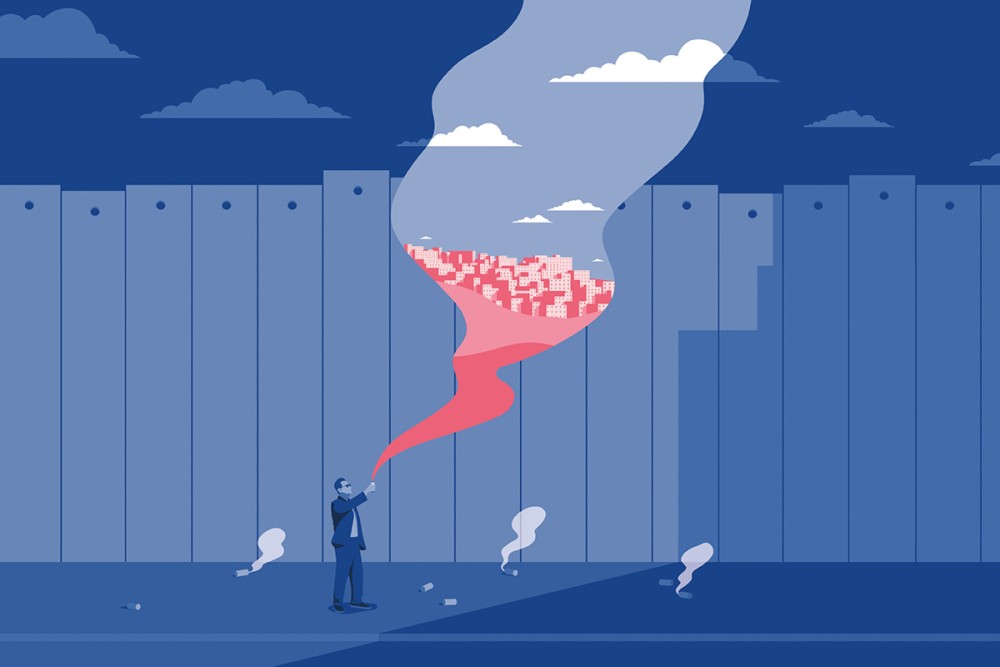What hope looks like to one Palestinian
Akram al-Waara sits in a refugee camp and makes art—out of tear gas canisters.

Akram al-Waara sits at a table surrounded by curling slivers of metal and hunks of olive wood. Other tables hold hills of sawdust and the remnants of jigsaw blades. I find him among the chaos, creating art from gas canisters the Israel Defense Forces shot over the separation wall that gashes across the little town of Bethlehem.
“You think of me as an artist?” he asks, as my eye turns across the room, taking in resin bowls, meticulously crafted jewelry, and an ornate metal sculpture of Jerusalem. “Many people think I’m crazy or stupid,” he says with a smile.
Akram was born in Aida, back when the refugee camp in Bethlehem was made up of canvas tents, before it became a permanent settlement of cinder-block buildings and tight alleyways. Today Aida’s scrap of land, less than a third of a square mile, is home to around 5,000 Palestinians who are refugees in their own land.





